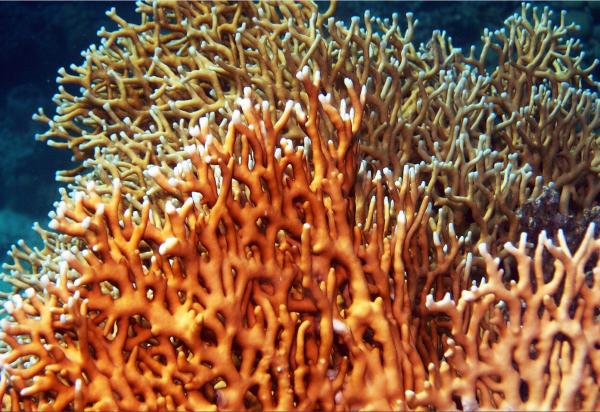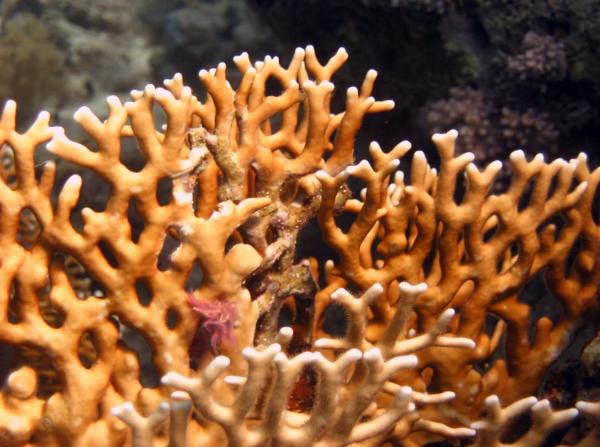Fire coral is a sessile marine organism belonging to the family Milleporidae. Although its sting is not fatal, it causes intense localized pain and skin irritation.

Tropical marine ecosystems are renowned for their vibrant shallow-water coral reefs, which mainly consist of hard corals and soft corals. Besides these, there is the so-called "fire coral" or "false coral," which shares some traits with both but differs significantly in its life cycle.
Fire coral belongs to the Hydrozoa class, unlike typical hard corals of the Anthozoa class that remain only in the polyp stage. Fire coral alternates between polyp and medusa stages. It is named "fire coral" because contact feels like a painful burn. It is also called "false fire coral" or "hydrocoral."

Only one genus exists: Millepora, which includes species such as:
Millepora tenera
Millepora tuberosa
Millepora dichotoma
Millepora platyphylla
Millepora intrincata
Millepora boschmai
Millepora alcicornis
Fire corals have a calcified, hard skeleton ranging from yellow to brown. Their forms vary—some grow thick branching structures like trees, others are plate-shaped or encrust reef bases. Colonies consist of multiple polyps with long, hair-like tentacles protruding.

Fire corals inhabit tropical and subtropical shallow marine environments, typically up to 40 meters deep. They attach to rocks or hard coral reefs and are integral to reef ecosystems.
Fire coral is a predator that quickly kills small fish, mollusks, and crustaceans. It also maintains a mutualistic relationship with symbiotic zooxanthellae algae living in its tissues. These algae provide nutrients through photosynthesis, while the coral offers shelter and nutrients from its metabolic waste.
Fire coral uses specialized stinging cells called cnidocytes, which eject venomous harpoons upon contact to immobilize prey or defend.
Stings cause immediate severe pain, skin irritation, swelling, itching, blisters, and lesions. Symptoms can last several days and up to two weeks in severe cases. The coral’s hard skeleton can abrade skin, increasing infection risk.
First Aid Recommendations:
Rinse the wound immediately with a solution of 10% vinegar and water to neutralize toxins.
Apply topical antihistamines and take oral antihistamines if needed to reduce allergic reactions.
Avoid fresh water rinsing, which may activate remaining stinging cells.
Seek medical attention for proper wound care and treatment.
Wear protective wetsuits when swimming or diving in areas known to contain fire coral. Avoid stepping on reef bottoms where fire coral and other marine life reside, especially if warning signs are present.
animal tags: Fire Coral
We created this article in conjunction with AI technology, then made sure it was fact-checked and edited by a Animals Top editor.